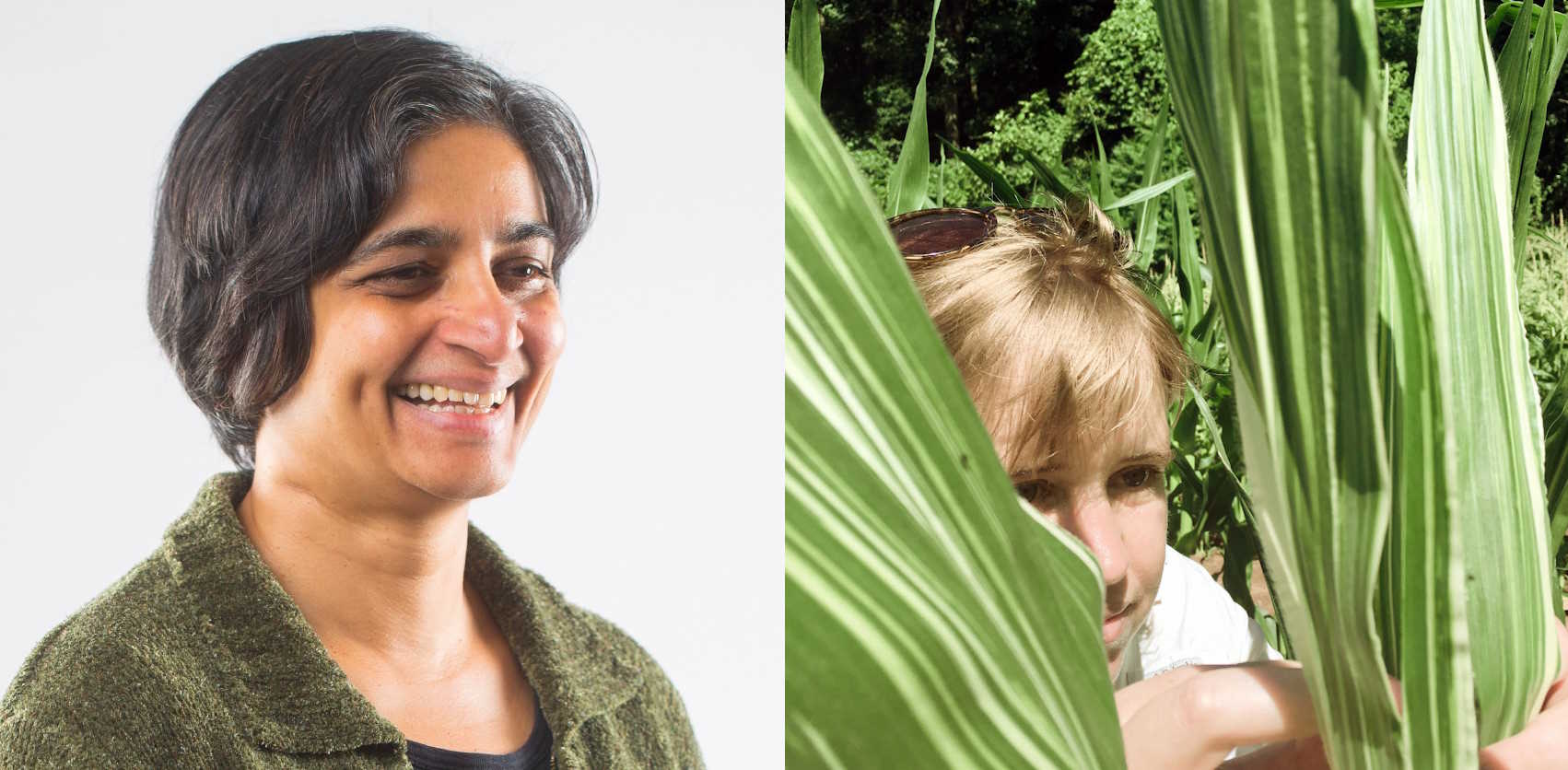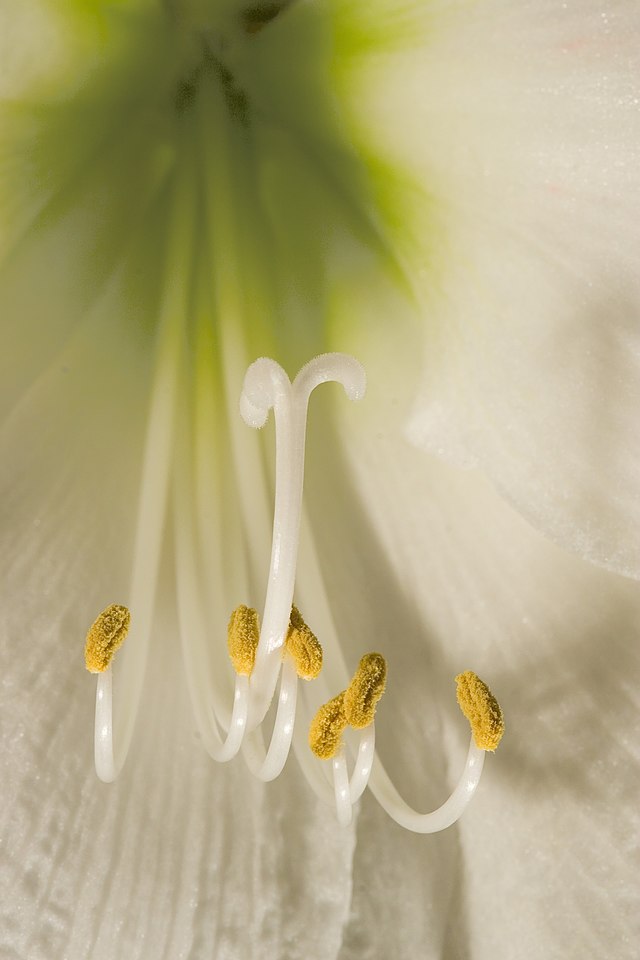Using accurate language is important: the words we choose influence how people think. For example, saying someone is childlike could be taken as a compliment, but saying something is childish is decidedly an insult. This applies to how we frame science as well, particularly when talking to the general public. If you describe a creature as a prey animal, people generally associate that with something meek and mild. However, wild boars are prey animals and I don’t know about you, but I definitely don’t want to find myself up against one. This particularity of language means scientists need to examine the words we use in our respective fields, as they could be limiting or misrepresenting our work. At the University of Massachusetts Amherst, two scientists are currently proposing such a language update for the field of Plant Biology.

Dr. Banu Subramaniam from the Department of Women, Gender, and Sexuality Studies and Dr. Madeleine Bartlett from the Plant Biology Program may seem like the odd couple for collaborators, but they are the perfect team to examine the language we use to describe plant sex. They focus on flowering plants, also called angiosperms, which are the largest group of plants today. The language used to discuss these plants, and the field of botany at large, is still heavily influenced by views originating in pre-Victorian Europe, principally from the influence of Carolus Linnaeus. Linnaeus, also known as the ‘father of taxonomy,’ established the current way we sex plants. The nomenclature he developed was based on his principle of Nuptiae Plantarum or the “marriage of plants.” In this system he introduced terms such as andria and gynia which mean husband and wife and were, overall, very gendered language. You can see the effects of his influence in the way we talk about reproduction and sex in plants even today: terms like male and female are used often, and it makes it seem like there are separate male and female plants. However, only 7% of plants have separate male and female flowers on the same plant with more than 86% of plants possessing both ‘male’ and ‘female’ parts in the very same flower. This misrepresentation makes the issue of current terminology clear; we are trying to describe an entire kingdom of life using terms meant for people – terms that don’t even cover the complexity of human gender and sex, never mind the plants. This is like trying to describe how far a fish swam by how many steps it took; the description just doesn’t fit and definitely is bound to give someone the wrong idea.
At first glance this argument may seem nitpicky. Like us, plants reproduce through gametes, the reproductive cells like sperm and eggs in animals and the pollen and ovule of plant flowers. Once you get to the very base of sex classification in plants or animals it generally comes down to identifying the individual possessing the larger gamete as ‘female’ and the individual with the smaller gamete as ‘male.’ So if plants have two different gametes, same as us, then why not just make it simple and categorize them like us? One reason is that a single flower could contain both a pistil and a stamen, which allows that flower to produce both gametes for that species. How are we classifying these plants? The terms ‘bisexual’ and ‘hermaphrodite’ have both been used but each have complex histories and connotations. More generally recognized and accepted is the term ‘perfect flower’ which is an individual flower (not the overall plant) that possesses both a pistil and a stamen and thus can produce both gametes. However these terms do not recognize the interesting ability of many flowering plants to self fertilize nor the variation within these plants possessing perfect flowers. For example, if one individual plant has some flowers that have both pistil and stamen and some flowers that have only one or the other, how do you distinguish that from a plant that has only perfect flowers? Additionally, what happens if all the pistil flowers die, has that changed the sex of the plant? Asking how many sexes there are in the plant kingdom is a lot like asking how many heights there are in humans; there technically is an answer but it isn’t really a useful one. To confine plants into ‘this is a male’ and ‘this is a female’ erases the variety that we find in reality. Bartlett comments that “[These] views are constraining, both in how we think about plants and limiting our understanding of plant biology. It means we are not asking questions about plants, and blind to some of the amazing biology that is there and hidden by these familiar words.”

Instead, Subramaniam and Bartlett propose to re-imagine plant sex and sexuality; to move away from the human-centric terms to a new system. Their system originates from examining the current language we use with a queer perspective. This means examining the terminology in a way that questions the binary of strict divisions between male and female and acknowledging the more fluid or nuanced realities of sex and sexuality. In essence, do away with any sort of gendered binary: drop male and female all together, as it doesn’t represent the reality of plants. Instead focus on the mating systems. The proposed system would include some already existing terms and some newly created ones. Plants could be described as monoecious vs dioecious, having different sexed flowers on one plant vs only one type of sexed flowers on a plant. There are outcrossers and selfers i.e. those who fertilize between plants and those that fertilize themselves. Flowers could be pollinators, ovulators, or binate based on what gametes they produce. In situations where plants have shifts in their gamete production over time, terms such as binate(p) and binate(o) to signify a majority of pollinate or ovulate flowers could be used. For example, a plant that has multiple sexed flowers, that fertilizes itself and has both perfect flowers and only pistil containing flowers would be described as a monoecious, selfer, binate(p). This is only a subset of example terms and the authors do want to emphasize that this is an ongoing conversation not a conclusive list of changes. However, all of these proposed changes are simple but important because they are actually descriptive of the reality of how plants operate.
Subramaniam and Bartlett acknowledge this will not be an easy transition, it may take years for everyone to relearn the ‘language’ of the field. The reason the current system has stuck so well is because it is so accessible and easy to relate to, and there will be pushback in leaving it behind. But in the system’s accessibility, we find that the descriptions have been simplified to the point of inaccuracy. This is dangerous as it risks the ideologies of one culture, in this case the culture of Europe in the 18th century, being mistaken as biological reality. In other words, using these terms for plants naturalizes this idea of a strict binary and makes it seem like it’s a biological fact, when it really is not. In sum, this project’s aim is not just to move away from the heteronormative and animal-centric language pervasive in plant biology, but also to make the words we use more precise and, ultimately, more useful. As Subramaniam and Bartlett state in their upcoming paper: “Our primary goal in this endeavor is to not limit the complexities of plant reproduction by analogizing it with the human. Revisiting our vocabulary will produce better and more accurate plant sciences.”
Author Bio:
 Julia LaValley is a PhD Student at UMass Amherst studying Neuroscience and Behavior. She is interested in neural circuitry and how it relates to behavior and sensory processing. In addition to working on her research Julia is also active in the Science Communication and Science Policy fields. In the future, Julia aspires to a career as a Science Diplomat where she hopes to put her skills into making science more accessible and policy more founded in science.
Julia LaValley is a PhD Student at UMass Amherst studying Neuroscience and Behavior. She is interested in neural circuitry and how it relates to behavior and sensory processing. In addition to working on her research Julia is also active in the Science Communication and Science Policy fields. In the future, Julia aspires to a career as a Science Diplomat where she hopes to put her skills into making science more accessible and policy more founded in science.

